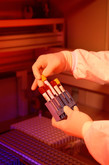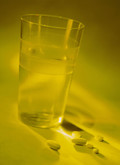Biosimilars
Battle rages over anti-thrombotic medicine
Sandoz/Momenta are ahead again in the fight for the lucrative anticoagulants market in the US. According to IMS Health data enoxaparin sodium injection is the best-selling hospital medicine in the US, and has been described as the ‘gold standard’ for anti-thrombotic treatments. Lovenox, sanofi-aventis’ reference product, recorded US sales of US$2.7 billion in 2009 and has been used to treat an estimated 200 million patients worldwide since it was launched.
Merck acquires follow-on Copaxone NBCD: determined to lead in MS
Germany-based Merck already markets its own multiple sclerosis (MS) drug Rebif (interferon beta-1a) but suffered a major blow during 2011 when regulators on both sides of the Atlantic rejected its oral MS treatment Movectro (cladribine). Merck has since abandoned the project.
Can biosimilar manufacturers learn from generic substitution issues
The substitution of generic prescription medicines for branded medicines is practiced in most Westernised countries, mainly because of its clear economic benefits. Patient experiences of generic substitution are mixed however, with many patients left confused or suspicious [1]. Given that a number of second-generation biosimilar compounds are expected to be approved within the next few years, and that biosimilar manufacturing costs are much higher than those of a simple generic, it is crucial for biosimilar manufacturers to avoid the uncertainty and mistrust that often accompanies generic substitution. Several recommendations have been made to help ensure that substitution pathways are streamlined and successful [1] but can any of these recommendations be applied to biosimilars?
US biosimilars: a report on FDA progress
This article reviews the steps being taken by FDA to implement the Biologics Price Competition and Innovation (BPCI) Act of 2009, enshrined in law in 2010 as the ‘biosimilars statute’.
US$1 billion for cancer R & D
GE Healthcare, the health business of General Electric, provides advanced cancer diagnostic and molecular imaging capabilities, as well as technologies for the manufacture of biopharmaceuticals and for cancer research. Its presence at the European Multidisciplinary Cancer Congress 2011 in Stockholm indicated its commitment to strengthening cancer diagnosis and care. Similarly at the 53rd Annual American Society for Radiation Oncology Meeting in Miami Beach, Florida, USA, it was showcasing a number of new tools designed specifically for the needs of radiation oncologists.
Development of biosimilars is not an easy matter
By 2020 biological products with sales of around US$23 billion in the EU and US$29 billion in the US will be exposed to biosimilar competition [1]. As more and more biologicals lose their patent protection, it is no wonder that Big Pharma, the biotechnology industry and generics manufacturers, as well as regulatory agencies, are becoming increasingly interested in biosimilars [2].
Brand-name statins costing healthcare system US$6.7 billion
Researchers at Mount Sinai School of Medicine, New York, USA, found that physicians prescribing unnecessary treatments or diagnostic tests, spanning a broad range of clinical conditions, costs the US healthcare system an extra US$6.7 billion annually. The findings, published in Archives of Internal Medicine, attributed prescribing of brand-name statins instead of generic statins as accounting for most of the excess cost [1].
Rituximab biosimilar successfully produced in plants
iBio, a leader in the plant-made pharmaceutical field, announced on 5 October 2011 that it had successfully expanded the use of its technology to biosimilar monoclonal antibodies (mAbs) by producing rituximab in non-transgenic green plants.
Biosimilar user fees proposal under review
Proposals over biosimilar user fees appear to have been ratified by stakeholders and a proposal is now under review by the US Department of Health and Human Services.
EMA definitions of generics and biosimilars
Confusion surrounding terms used in the global field of generics and biosimilars is a recognised problem. The members of the Biosimilar Medicinal Products Working Party at EMA have recently expressed the need to propose a more precise definition for biosimilars due to problems arising from imprecise usage of the term in the scientific literature and elsewhere [1].













